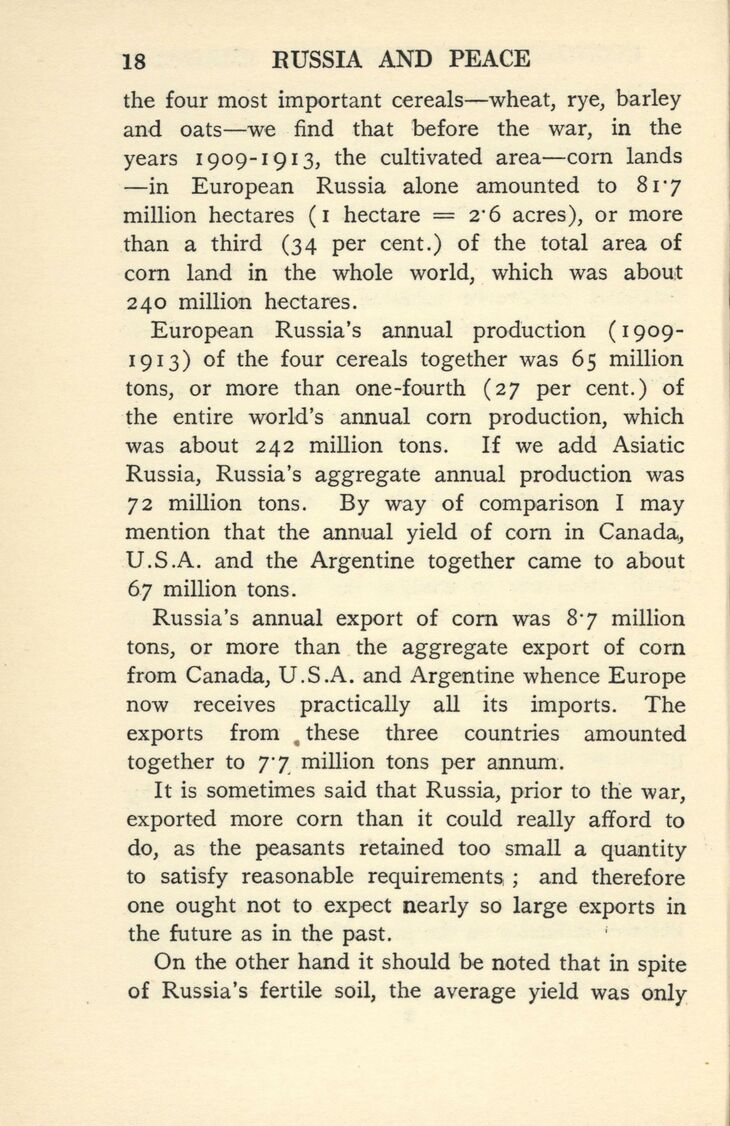
Full resolution (JPEG) - On this page / på denna sida - I. Russia and the economic equilibrium of Europe

<< prev. page << föreg. sida << >> nästa sida >> next page >>
Below is the raw OCR text
from the above scanned image.
Do you see an error? Proofread the page now!
Här nedan syns maskintolkade texten från faksimilbilden ovan.
Ser du något fel? Korrekturläs sidan nu!
This page has been proofread at least once.
(diff)
(history)
Denna sida har korrekturlästs minst en gång.
(skillnad)
(historik)
the four most important cereals—wheat, rye, barley
and oats—we find that before the war, in the
years 1909-1913, the cultivated area—corn
lands—in European Russia alone amounted to 81.7
million hectares (1 hectare = 2.6 acres), or more
than a third (34 per cent.) of the total area of
corn land in the whole world, which was about
240 million hectares.
European Russia’s annual production
(1909-1913) of the four cereals together was 65 million
tons, or more than one-fourth (27 per cent.) of
the entire world’s annual corn production, which
was about 242 million tons. If we add Asiatic
Russia, Russia’s aggregate annual production was
72 million tons. By way of comparison I may
mention that the annual yield of corn in Canada,
U.S.A. and the Argentine together came to about
67 million tons.
Russia’s annual export of corn was 8.7 million
tons, or more than the aggregate export of corn
from Canada, U.S.A. and Argentine whence Europe
now receives practically all its imports. The
exports from t these three countries amounted
together to 7.7 million tons per annum.
It is sometimes said that Russia, prior to the war,
exported more corn than it could really afford to
do, as the peasants retained too small a quantity
to satisfy reasonable requirements; and therefore
one ought not to expect nearly so large exports in
the future as in the past.
On the other hand it should be noted that in spite
of Russia’s fertile soil, the average yield was only
<< prev. page << föreg. sida << >> nästa sida >> next page >>